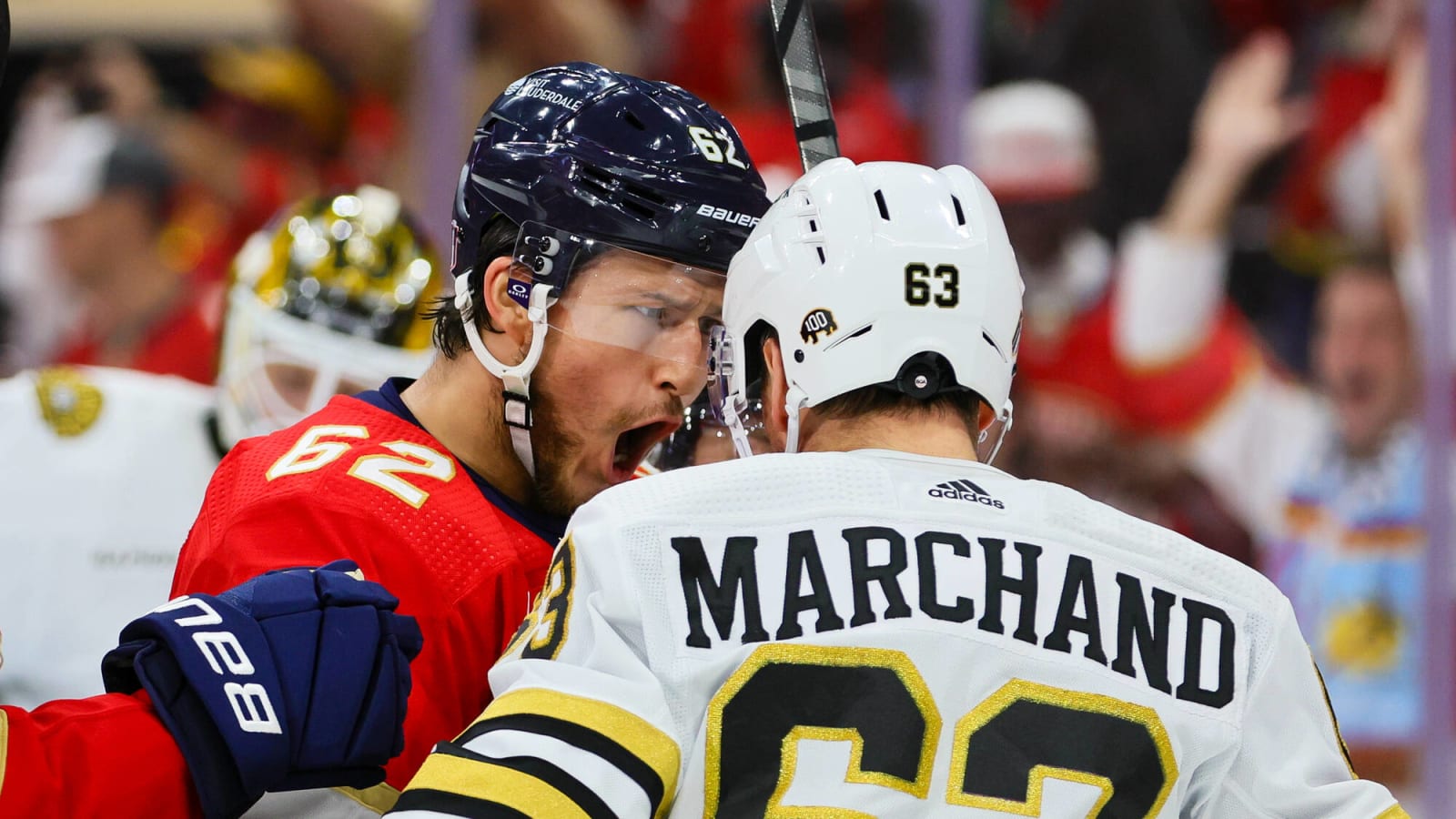
Brad Marchand recently spoke to the media following a two-game absence due to an undisclosed upper-body injury. Mr. Bettman, are we allowed to say the word “concussion”?
An injury sustained in what would later be described by officials working the game and the Department of Player Safety as a “hockey play.”
Now, whether the parameters of a “hockey play” align with something you’d see during Wrestlemania is up for debate. What is not up for debate is a mutual understanding, in this instance, between Brad Marchand and Sam Bennett, that during the playoffs, the goal is to win by any means necessary.
Standing in front of the media following Thursday’s practice, Marchand elaborated on that very point: ” People don’t want to say it, but part of the playoffs is trying to hurt every player on the other team. The more guys you take out, the more advantage your team has… Every time you step on the ice, someone is trying to hurt someone.”
Talked to several people in the league about the Sam Bennett / Brad Marchand play.
— Emily Kaplan (@emilymkaplan) May 13, 2024
The NHL also didn’t see the reverse angle until Sunday, but it didn’t change how Player Safety saw it — not as a sucker punch, but as a hockey play with two players engaged.
So how did our two industry experts describe their experience? “He got away with one” and “hockey play.” I’ll let you connect the dots on who said what.
Undeniably intensity is ramped up to eleven upon conclusion of the regular season, especially when teams find themselves matched up year-over-year against one another.
So, taken at face value, Marchand’s logic is absolutely correct. Of course, injuring your opposition’s top players in a short tournament gives your squad an advantage.
But therein lies the issue. There’s a considerable amount of middle ground between playing a hard, physical, and intense game which over the course of a series results in injuries and then theres going out of your way to tag players who are in a vulnerable position. Given the circumstance, Marchand’s quote offers little clarity on what exactly he means.
In terms of visual representation, take Bennett’s hit on Jaccob Slavin or Keegan Kolesar’s body check on Matthew Tkachuk and compare it with this collision with Matthew Knies and the more recent one with Marchand. Four hits, four injuries, two outliers.
Having zero career playoff games under the belt, you can assume whether this opinion matters or not. But I’d wager there isn’t a single player in the game who does not enjoy a fast, physical, mean playoff game. However, I have yet to hear of anyone who accepts standing on the sidelines as a result of a questionable collision, especially from a player with a reputation.
So when Marchand proclaims everyone is trying to hurt everyone and, before taking a breath, says Bennett “got away with one,”. You can interpret his message, despite how confusing, might connect more with the contact on Slavin and Tkachuk than whatever you want to describe what Bennett was up to.
You often hear about the code and how dedicated players are to operating within it. I’m just not sure where a punch to the head was written into this invisible code of ethics, but I digress. Which brings up a greater point—there always has and will forever be a problem in hockey. A sport littered with grey areas, interpreted by different generations, played at maximum speed, with no out-of-bounds. What could go wrong?
Friday night in Boston for game six could tell us exactly what could go wrong, particularly with a lopsided score in either direction. Marchand will be seeking his pound of flesh. The question becomes, will it fall within the guidelines of proper sportsmanship and conduct?
More must-reads:
- Senators reportedly undecided on qualifying defenseman
- Oilers beat Stars to take 3-2 lead in WCF
- The 'MLB stolen base leaders' quiz
Breaking News
Customize Your Newsletter
 +
+
Get the latest news and rumors, customized to your favorite sports and teams. Emailed daily. Always free!

